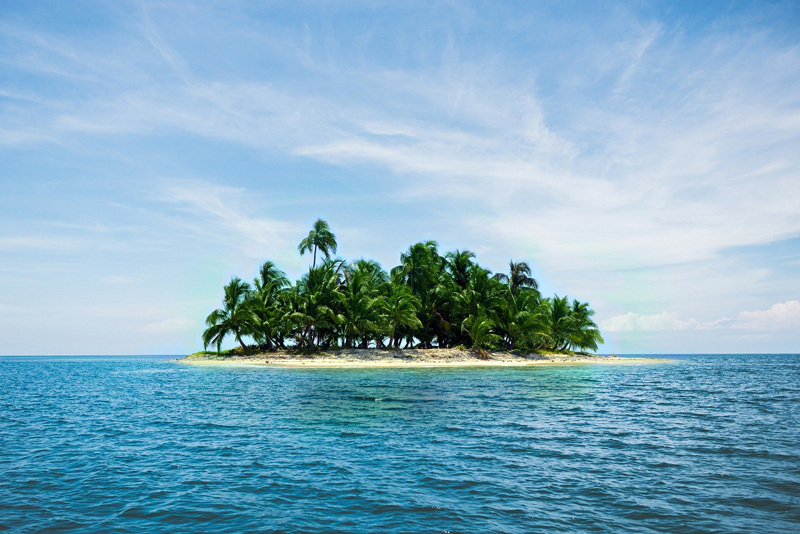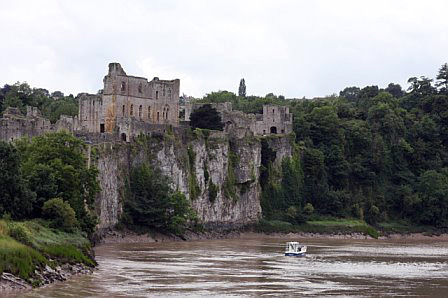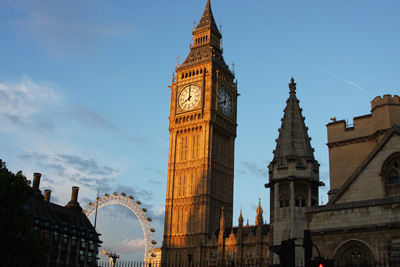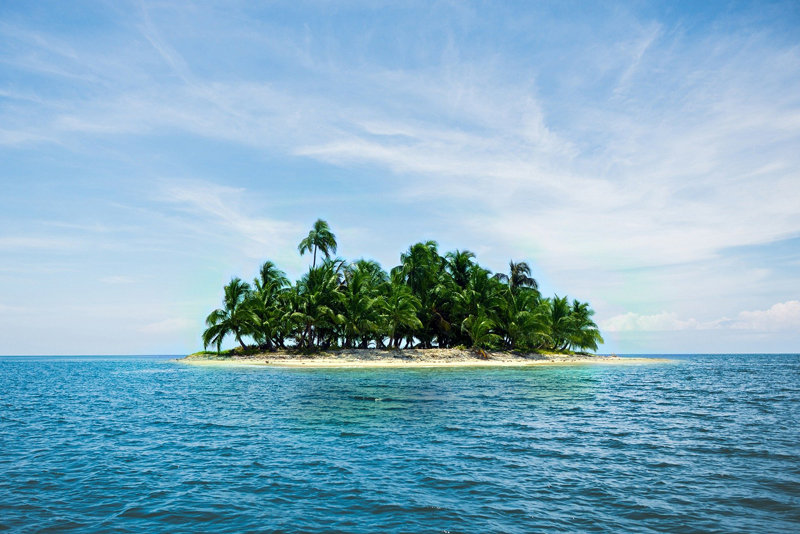Great Britain - England, Scotland and Wales

Great Britain, United Kingdom, British Isles, England….. we Americans often get confused at the number of different terms that seem to encompass this one country. But it’s really not as complicated as it seems. The United Kingdom and England are terms that define political regions – the United Kingdom is the sovereign state that includes the dependent countries of England, Scotland, Wales, and Northern Ireland. In contrast – the British Isles and Great Britain are essentially geographic designations. The British Isles are an archipelago off the northwest coast of continental Europe that includes the island of Ireland, the island of Great Britain and, believe it or not, about 6000 smaller islands! So let’s narrow our scope and discover just the single island – Great Britain.
Great Britain is the ninth largest island in the world covering an area of around 80,000 square miles. It includes the countries of England, Scotland and Wales and through their populations, totaling nearly 60 mil., constitutes the third most populous island in the world (after Java in Indonesia and Honshu in Japan). With that dense a population you’d be surprised at how much uninhabited space you can still find on this island. You will also find a great variety of landscapes and interesting places to visit and explore. It’s impossible to address all of the wonders of the island of Great Britain in one short article, but let’s touch on some highlights.
 Starting at the northernmost end of the island of Great Britain you can explore the renowned “Scottish Highlands”, an area for which the Scottish Gaelic name translates as “the land of the Gaels”. This area is where you will find the highest mountains on the island of Great Britain (the highest being Ben Nevis at 4,409 feet), some of the oldest rock formations on Earth, a plethora of beautiful lochs (Scottish lakes or sea inlets) and the least populated area of Great Britain. So this is a nature lover’s or a geologist’s haven. The other half of Scotland is often known as the “Lowlands”, but the name belies the beauty of this area of rolling hills and lochs, that has the higher levels of population and therefore the larger cities of Scotland, including the capital of Edinburgh. It is also home to some of the most famous Scottish golf courses, and throughout Scotland you can find numerous ancient castles and historical sites of interest. Scotland also has some spectacular coastline, though not the type of beaches where you’d want to go swimming – brrrr!!!
Starting at the northernmost end of the island of Great Britain you can explore the renowned “Scottish Highlands”, an area for which the Scottish Gaelic name translates as “the land of the Gaels”. This area is where you will find the highest mountains on the island of Great Britain (the highest being Ben Nevis at 4,409 feet), some of the oldest rock formations on Earth, a plethora of beautiful lochs (Scottish lakes or sea inlets) and the least populated area of Great Britain. So this is a nature lover’s or a geologist’s haven. The other half of Scotland is often known as the “Lowlands”, but the name belies the beauty of this area of rolling hills and lochs, that has the higher levels of population and therefore the larger cities of Scotland, including the capital of Edinburgh. It is also home to some of the most famous Scottish golf courses, and throughout Scotland you can find numerous ancient castles and historical sites of interest. Scotland also has some spectacular coastline, though not the type of beaches where you’d want to go swimming – brrrr!!!
South of the Scottish border you enter the naturally beautiful English counties of Northumberland and Cumbria. Northumberland is known best for its high moorland landscapes and scarce population, together with a spectacular coastline, and one of the most famous tourist sites in northern England – Hadrian’s Wall, an old Roman fortification. Cumbria is famous as the “Lake District” of England. Here the mountains are often referred to as “fells” and the lakes are more commonly known as “meres”, “waters”, or “tarns”. The scenic beauty of this area attracts many tourists, but be warned – it also has the wettest climate in England and many parts are fairly boggy.
Further south in England you come to the area known as the “Midlands”, also sometimes referred to as the “heart” of England. One of the most famous sites to visit here is Stratford-upon-Avon – the wonderfully preserved historic city that is best known as the birthplace of William Shakespeare. Or maybe you’d just like to drive through the picturesque English countryside of the Cotswolds littered with narrow roads and ancient limestone cottages. But beware – if you try to drive, make sure you have a good navigation system – very few roads are marked and the “lanes” turn in all kinds of unanticipated directions, and of course ensure you stay on the right, that is the left, side of the road.
 Of course, in the southeast of England, you find London – a truly magnificent city with an infinite variety of attractions to explore – from riding the London Eye up for spectacular views of the entire city to watching the changing of the guard at Buckingham Palace to shopping the amazingly long and colorful market on Portobello Road. London also has many interesting evening attractions – excellent theater productions, historical tours focused on Charles Dickens or Jack the Ripper, or famous pub walks through ancient pubs with fascinating names like “The Pig’s Ear” or “Ye Olde Cheshire Cheese” or “The Bleeding Heart Tavern”. Like many, I’m not a huge fan of English food, but getting an old-fashioned pub meal is still a fun experience. Or take a day trip out of London to visit places like Stonehenge, Windsor Castle, Winchester Cathedral, Canterbury, etc.
Of course, in the southeast of England, you find London – a truly magnificent city with an infinite variety of attractions to explore – from riding the London Eye up for spectacular views of the entire city to watching the changing of the guard at Buckingham Palace to shopping the amazingly long and colorful market on Portobello Road. London also has many interesting evening attractions – excellent theater productions, historical tours focused on Charles Dickens or Jack the Ripper, or famous pub walks through ancient pubs with fascinating names like “The Pig’s Ear” or “Ye Olde Cheshire Cheese” or “The Bleeding Heart Tavern”. Like many, I’m not a huge fan of English food, but getting an old-fashioned pub meal is still a fun experience. Or take a day trip out of London to visit places like Stonehenge, Windsor Castle, Winchester Cathedral, Canterbury, etc.
And then to the west of England, you find the lovely country of Wales. The Welsh countryside is filled with fascinating historical sites like Chepstow Castle, the ruins of the ancient Roman town of Caerwent, the “Big Pit” coal mine, the unique corbels at Kilpeck Church and so much more. And then you come to the coastline with some truly beautiful beaches.
There is so much more to the island of Great Britain, but this gives at least a little taste of the variety and opportunity for interesting island travel.
Note: no promotional consideration was provided or paid for this article.
Great Britain is the ninth largest island in the world covering an area of around 80,000 square miles. It includes the countries of England, Scotland and Wales and through their populations, totaling nearly 60 mil., constitutes the third most populous island in the world (after Java in Indonesia and Honshu in Japan). With that dense a population you’d be surprised at how much uninhabited space you can still find on this island. You will also find a great variety of landscapes and interesting places to visit and explore. It’s impossible to address all of the wonders of the island of Great Britain in one short article, but let’s touch on some highlights.
 Starting at the northernmost end of the island of Great Britain you can explore the renowned “Scottish Highlands”, an area for which the Scottish Gaelic name translates as “the land of the Gaels”. This area is where you will find the highest mountains on the island of Great Britain (the highest being Ben Nevis at 4,409 feet), some of the oldest rock formations on Earth, a plethora of beautiful lochs (Scottish lakes or sea inlets) and the least populated area of Great Britain. So this is a nature lover’s or a geologist’s haven. The other half of Scotland is often known as the “Lowlands”, but the name belies the beauty of this area of rolling hills and lochs, that has the higher levels of population and therefore the larger cities of Scotland, including the capital of Edinburgh. It is also home to some of the most famous Scottish golf courses, and throughout Scotland you can find numerous ancient castles and historical sites of interest. Scotland also has some spectacular coastline, though not the type of beaches where you’d want to go swimming – brrrr!!!
Starting at the northernmost end of the island of Great Britain you can explore the renowned “Scottish Highlands”, an area for which the Scottish Gaelic name translates as “the land of the Gaels”. This area is where you will find the highest mountains on the island of Great Britain (the highest being Ben Nevis at 4,409 feet), some of the oldest rock formations on Earth, a plethora of beautiful lochs (Scottish lakes or sea inlets) and the least populated area of Great Britain. So this is a nature lover’s or a geologist’s haven. The other half of Scotland is often known as the “Lowlands”, but the name belies the beauty of this area of rolling hills and lochs, that has the higher levels of population and therefore the larger cities of Scotland, including the capital of Edinburgh. It is also home to some of the most famous Scottish golf courses, and throughout Scotland you can find numerous ancient castles and historical sites of interest. Scotland also has some spectacular coastline, though not the type of beaches where you’d want to go swimming – brrrr!!!South of the Scottish border you enter the naturally beautiful English counties of Northumberland and Cumbria. Northumberland is known best for its high moorland landscapes and scarce population, together with a spectacular coastline, and one of the most famous tourist sites in northern England – Hadrian’s Wall, an old Roman fortification. Cumbria is famous as the “Lake District” of England. Here the mountains are often referred to as “fells” and the lakes are more commonly known as “meres”, “waters”, or “tarns”. The scenic beauty of this area attracts many tourists, but be warned – it also has the wettest climate in England and many parts are fairly boggy.
Further south in England you come to the area known as the “Midlands”, also sometimes referred to as the “heart” of England. One of the most famous sites to visit here is Stratford-upon-Avon – the wonderfully preserved historic city that is best known as the birthplace of William Shakespeare. Or maybe you’d just like to drive through the picturesque English countryside of the Cotswolds littered with narrow roads and ancient limestone cottages. But beware – if you try to drive, make sure you have a good navigation system – very few roads are marked and the “lanes” turn in all kinds of unanticipated directions, and of course ensure you stay on the right, that is the left, side of the road.
 Of course, in the southeast of England, you find London – a truly magnificent city with an infinite variety of attractions to explore – from riding the London Eye up for spectacular views of the entire city to watching the changing of the guard at Buckingham Palace to shopping the amazingly long and colorful market on Portobello Road. London also has many interesting evening attractions – excellent theater productions, historical tours focused on Charles Dickens or Jack the Ripper, or famous pub walks through ancient pubs with fascinating names like “The Pig’s Ear” or “Ye Olde Cheshire Cheese” or “The Bleeding Heart Tavern”. Like many, I’m not a huge fan of English food, but getting an old-fashioned pub meal is still a fun experience. Or take a day trip out of London to visit places like Stonehenge, Windsor Castle, Winchester Cathedral, Canterbury, etc.
Of course, in the southeast of England, you find London – a truly magnificent city with an infinite variety of attractions to explore – from riding the London Eye up for spectacular views of the entire city to watching the changing of the guard at Buckingham Palace to shopping the amazingly long and colorful market on Portobello Road. London also has many interesting evening attractions – excellent theater productions, historical tours focused on Charles Dickens or Jack the Ripper, or famous pub walks through ancient pubs with fascinating names like “The Pig’s Ear” or “Ye Olde Cheshire Cheese” or “The Bleeding Heart Tavern”. Like many, I’m not a huge fan of English food, but getting an old-fashioned pub meal is still a fun experience. Or take a day trip out of London to visit places like Stonehenge, Windsor Castle, Winchester Cathedral, Canterbury, etc.And then to the west of England, you find the lovely country of Wales. The Welsh countryside is filled with fascinating historical sites like Chepstow Castle, the ruins of the ancient Roman town of Caerwent, the “Big Pit” coal mine, the unique corbels at Kilpeck Church and so much more. And then you come to the coastline with some truly beautiful beaches.
There is so much more to the island of Great Britain, but this gives at least a little taste of the variety and opportunity for interesting island travel.
Note: no promotional consideration was provided or paid for this article.

Related Articles
Editor's Picks Articles
Top Ten Articles
Previous Features
Site Map
Content copyright © 2023 by Laura Hartney. All rights reserved.
This content was written by Laura Hartney. If you wish to use this content in any manner, you need written permission. Contact Malika Bowling for details.



